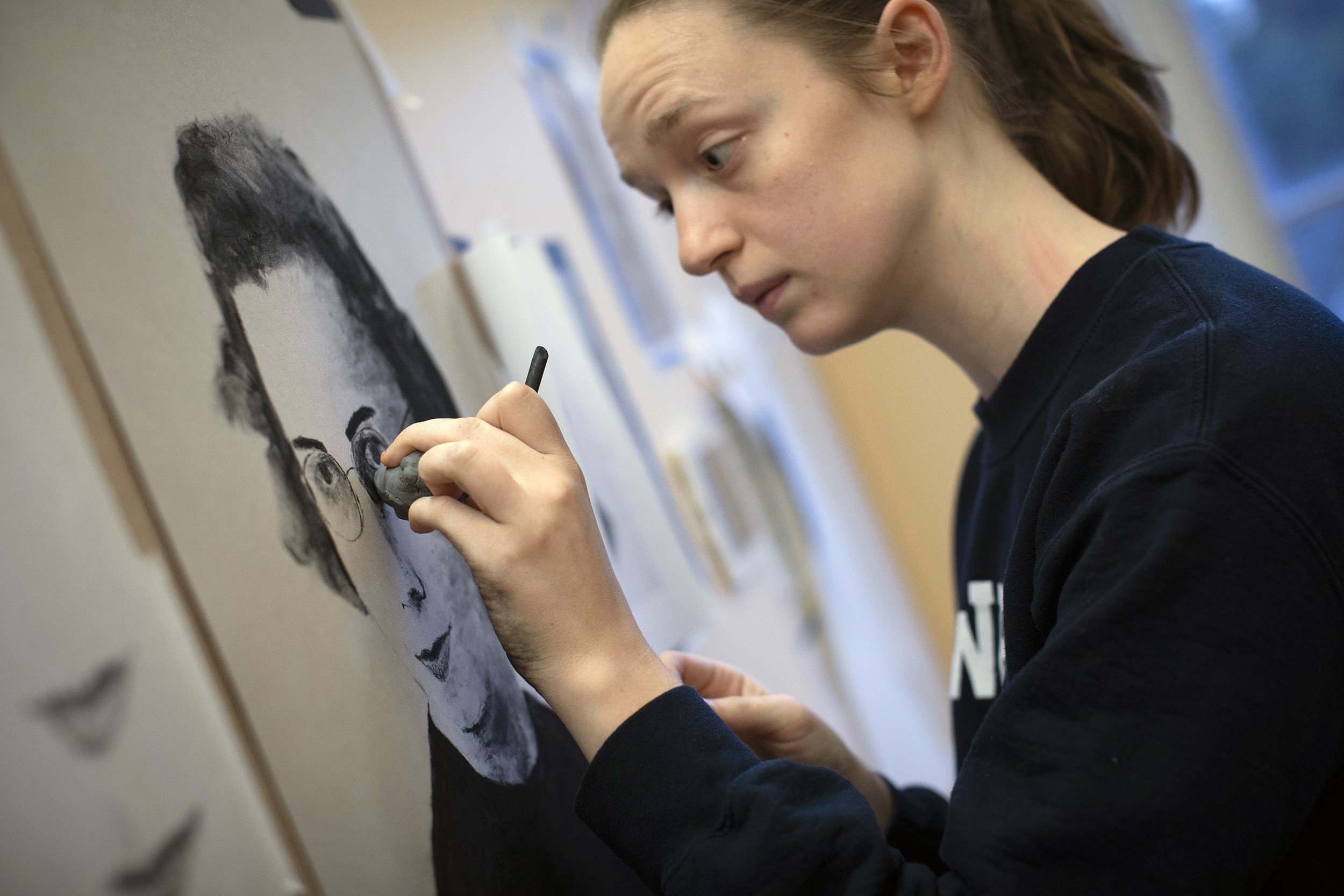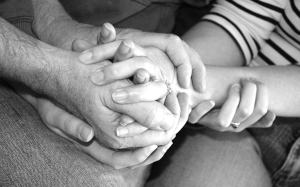The Harvard Portraiture Project embodies a rich tapestry of storytelling through the transformative power of art. Spearheaded by artist Robert Shetterly and supported by Harvard affiliates, this initiative focuses on celebrating diversity in portraiture by showcasing figures who have made significant impacts on society. The project is part of a broader movement that includes Shetterly’s renowned “Americans Who Tell the Truth” collection, which seeks to bring overlooked voices to the forefront. Highlighting the narratives of female changemakers alongside iconic portraits, the Harvard Portraiture Project promotes a deeper understanding of hope and change within our communities. Through these artistic expressions, visitors are invited to engage in a dialogue that reflects upon the complexities of representation and courage in our collective history.
The Harvard Portraiture Project stands as a testament to the profound impact of visual storytelling within the realm of community engagement. In essence, it serves as a vibrant platform that amplifies narratives often left unearthed, showcasing those who strive for change while embodying the spirit of trailblazers. Robert Shetterly’s work, particularly in conjunction with the “Americans Who Tell the Truth” series, emphasizes the importance of honoring diverse contributions to society. The initiative not only highlights the lives of significant female figures but also fosters a broader conversation about equity and representation in art. By weaving together these powerful portraits, the project challenges viewers to connect with the stories behind the images, celebrating both historical and contemporary advocates for social justice.
Exploring Robert Shetterly’s Artistic Journey
Robert Shetterly’s artistic journey is a compelling narrative of social change and personal conviction. After the Iraq War began, Shetterly harnessed his skills as a painter to confront issues of truth and justice through his work. His series, ‘Americans Who Tell the Truth,’ emerged as a poignant response to the disillusionment he felt, transforming personal outrage into a broader artistic commentary. Through his portraits, Shetterly highlights the courage of those who challenge norms, providing a visual representation of their relentless pursuit of justice and integrity in society.
The evolution of Shetterly’s work reflects a dedication not only to artistry but also to activism. His portraits serve as educational tools that aim to inspire viewers to reflect on their own values and the societal narratives they engage with. By engaging with LSI terms like ‘courage’ and ‘social justice,’ shetterly’s art encourages a deeper involvement with contemporary issues, making every painting a conversation starter about vital cultural and political matters.
The Harvard Portraiture Project: A Celebration of Diversity
The Harvard Foundation Portraiture Project plays a critical role in diversifying the representation of voices and experiences depicted through art. By focusing on individuals who have made significant contributions to society, this initiative aims to challenge traditional narratives that often overlook marginalized perspectives. This diversity in portraiture not only enriches the Harvard campus but also invites visitors to engage with the stories behind these remarkable figures, fostering a sense of community and shared history.
Participants in the Portraiture Project, like Stephen Coit, emphasize collaboration by working closely with their subjects to reflect their true essence. This inclusive approach aligns with Shetterly’s philosophy of portraying individuals who embody courage and change, further reinforcing the importance of representation in art. The celebration of female changemakers within this project, including trailblazers like Pauli Murray and Rosa Rios, exemplifies the commitment to portraying varied narratives that resonate across generations.
Women in Portraiture: Honoring Changemakers
The emphasis on female changemakers in the recent exhibition at Cabot showcases the depth of female contributions to social justice and cultural evolution. Portraits featuring influential figures such as civil rights activist Pauli Murray and ethnomusicologist Rulan Pian vividly capture their legacies. By specifically spotlighting female leaders during Women’s Week, the exhibit not only honors their achievements but also highlights the ongoing struggles for gender equity, encouraging viewers to reflect on the impact of these women’s work.
Showcasing women through powerful visual art challenges societal narratives and inspires future generations. As Habiba Braimah articulated, the union of advocacy and solidarity, essential for gender equity, owes much to women who have stood resiliently at the forefront. This highlights how representation in portraiture can serve as a transformative tool, elevating diverse voices while inspiring new dialogues around equity and justice.
The Impact of Quotes in Shetterly’s Portraits
One of the distinctive features of Robert Shetterly’s artwork is his incorporation of quotes into the wooden surfaces of his portraits. This approach not only adds a tactile quality but also deepens the connection between the viewer and the subject. By carving quotes that reflect the essence of these individuals, Shetterly elevates their words, allowing their wisdom to resonate more profoundly, particularly within the context of social justice and advocacy as emphasized in his reflections on gender equity.
Furthermore, Shetterly’s strategy of integrating quotes into his works serves as a tool for education and engagement. Recognizing that many gallery-goers spend negligible time observing a painting, he aims to slow down that process, encouraging viewers to contemplate the subjects’ messages. By riveting attention on both the visual and verbal narratives, Shetterly effectively transforms the act of viewing art into an opportunity for learning and introspection.
The Role of Collaboration in Portraiture
Collaboration is a cornerstone of the Harvard Portraiture Project, as expressed by Stephen Coit. Engaging subjects in the creative process allows for a representation that is authentic and resonates with their narrative. This participatory approach redefines the artist-subject relationship, emphasizing that the stories of individuals are best told when they have a hand in their portrayal. By involving subjects in discussions about their backgrounds and aspirations, the resulting portraits become multidimensional representations of their identities.
This collaborative ethos echoes throughout Shetterly’s approach as well, where he seeks to embody the spirit of his subjects. By working with individuals who have shown remarkable courage, he establishes an artistic practice that not only honors their stories but also opens broader conversations about societal change. In doing so, both Coit and Shetterly contribute to a progressive dialogue surrounding art, representation, and the power of shared experiences.
Encouraging Reflection through Artistic Experiences
Art is a powerful medium for prompting reflection and dialogue, a purpose that both Robert Shetterly and the Harvard Portraiture Project strive to achieve. The visual storytelling encapsulated in each portrait encourages viewers not just to look but to see and feel the narratives at play. By utilizing powerful imagery alongside compelling quotes, these artists urge audiences to engage more deeply with the issues presented, such as social justice and representation.
This process of engaging with art transforms the viewer’s experience into a moment of contemplation, urging them to consider their role within the societal framework. The combination of evocative imagery and meaningful words amplifies the impact of the portraits, allowing them to resonate long after the initial viewing. By fostering an environment of reflection, the projects challenge viewers to become active participants rather than passive observers in discussions about culture and change.
Transformation through Art: The Emotional Connection
The emotional connection between art and viewer is amplified through Robert Shetterly’s portraits, which are designed to invoke feelings and provoke thought. Each piece carefully crafts a story that speaks to the viewer’s heart and mind, facilitating a deeper understanding of the subjects’ struggles and triumphs. This emotional resonance is particularly vital when addressing themes of social justice, as it invites conversations that might otherwise feel distant or inaccessible.
Art has the unique ability to capture human experiences and convert abstract concepts of justice and courage into personal narratives. Shetterly’s portraits accomplish this by showcasing real individuals who have fought for change, establishing a bridge that links the audience to the broader themes of advocacy and the fight for equity. This transformative nature of art is what makes the collaboration between Shetterly and the Harvard Portraiture Project so impactful and essential.
Harvard’s Commitment to Diversity in the Arts
Harvard University has long been committed to promoting diversity through its art programs and exhibits. The Harvard Foundation Portraiture Project exemplifies this commitment by actively seeking to include marginalized voices in its showcases. By amplifying these diverse stories, the university not only enriches its artistic offerings but also fosters an inclusive environment where all members of the community can see themselves represented and valued.
Diversity in portraiture is essential for fostering a nuanced understanding of the rich tapestry of human experience. By highlighting figures across various backgrounds and disciplines, such as those featured in Shetterly’s ‘Americans Who Tell the Truth,’ the university underscores the importance of inclusive narratives in the arts. This commitment not only educates but also inspires future artists and advocates to carry on the legacy of representation and equity.
Art as a Reflection of Society’s Values
Art plays a significant role in reflecting and shaping societal values, an idea central to Robert Shetterly’s work and the broader initiatives at Harvard. Through visual storytelling, artists like Shetterly encourage society to examine its principles and the figures we choose to elevate. Each portrait acts as a mirror, inviting audiences to confront the values they hold versus those they wish to aspire to in pursuit of justice.
The artistic endeavors related to the Harvard Foundation Portraiture Project serve as platforms for dialogue about pressing societal issues such as equity, representation, and the nature of heroism. By recognizing and honoring the contributions of those who advocate for social change, art becomes a vehicle for inspiring collective action. Both Shetterly and the project underscore the responsibility artists have to not only create beauty but also to challenge and provoke thought within their communities.
Frequently Asked Questions
What is the Harvard Portraiture Project and its significance?
The Harvard Portraiture Project is an initiative aimed at diversifying the visual representation on Harvard’s campus, initiated by Robert Shetterly and the late S. Allen Counter. It highlights the contributions of underrepresented individuals, especially women and activists, through portraiture, thereby amplifying their voices and stories in a significant cultural context.
How does Robert Shetterly’s art relate to the Harvard Portraiture Project?
Robert Shetterly’s art, particularly his series ‘Americans Who Tell the Truth,’ complements the Harvard Portraiture Project by depicting individuals who embody courage and social justice. His portraits focus on those who have made impactful contributions to society, offering a counter-narrative to mainstream portrayals often seen in traditional art forms.
What themes does the Harvard Portraiture Project explore in its exhibitions?
The Harvard Portraiture Project explores themes of diversity in portraiture, gender equity, and social justice. By showcasing individuals like civil rights activists and female changemakers, the project aims to foster dialogue about representation and the importance of recognizing diverse voices throughout history.
Who are some notable figures featured in the Harvard Portraiture Project?
Notable figures featured in the Harvard Portraiture Project include civil rights icons like Pauli Murray, former U.S. Treasurer Rosa Rios, and Harvard affiliates who have made significant contributions to social justice and gender equity. Their portrayals serve to inspire and educate viewers about their impactful legacies.
What impact does Robert Shetterly aim to achieve through his portraits?
Through his portraits, Robert Shetterly aims to foster awareness and understanding of courage, activism, and social change. He seeks to immortalize the stories of those who challenge injustice, encouraging viewers to reflect on their contributions to society and the ongoing struggle for social justice.
How does diversity in portraiture shape public perception according to the Harvard Portraiture Project?
Diversity in portraiture, as promoted by the Harvard Portraiture Project, shapes public perception by challenging traditional narratives and offering a more inclusive representation of history. This initiative helps highlight the contributions of marginalized groups, fostering greater awareness and appreciation for their impact on society.
What is the role of female changemakers in the Harvard Portraiture Project?
Female changemakers play a pivotal role in the Harvard Portraiture Project by representing the fight for gender equity and social justice. Their portraits not only honor their contributions but also inspire future generations to engage in advocacy and activism, emphasizing the importance of solidarity in these movements.
How does the Harvard Portraiture Project integrate art into social activism?
The Harvard Portraiture Project integrates art into social activism by using portraiture as a medium to highlight the lives and struggles of individuals who have fought for justice and equity. This artistic approach serves to visually communicate messages of hope, resilience, and the ongoing quest for change.
What techniques does Robert Shetterly use in his portrait paintings?
Robert Shetterly uses a combination of traditional painting techniques on wood panels, including brushes, palette knives, and his fingers. He incorporates quotes from his subjects into the artwork, using a dental pick to incise them into the surface, which adds depth and emphasizes their words in relation to their visual representation.
How can visitors engage with the messages of the Harvard Portraiture Project?
Visitors can engage with the messages of the Harvard Portraiture Project by actively viewing the artworks, reflecting on the stories of the individuals portrayed, and participating in discussions around the themes of representation, social justice, and diversity. By taking time to understand the context of each portrait, viewers can form a deeper connection to the issues presented.
| Key Points |
|---|
| The Harvard Portraiture Project and Shetterly’s “Americans Who Tell the Truth” aim to amplify overlooked voices through art. |
| Robert Shetterly’s portraits feature individuals who have shown courage in the face of adversity, reflecting social justice themes. |
| Recent exhibition highlighted female changemakers and emphasized the importance of gender equity in social justice. |
| Shetterly incorporates quotes into his portraits to engage viewers and encourage deeper reflection on the subjects. |
| The collaboration between various Harvard organizations has created a rich dialogue about representation in art and society. |
Summary
The Harvard Portraiture Project explores vital narratives that challenge societal perceptions and celebrate diversity. Through compelling artistic expression, like those seen in Robert Shetterly’s works, it addresses crucial themes of courage and activism. The initiative emphasizes the importance of recognizing both historical and contemporary figures who have contributed to social justice and equity, particularly during pivotal movements for gender rights. By highlighting these stories, the project aims to foster a greater understanding of the past while inspiring future generations.




